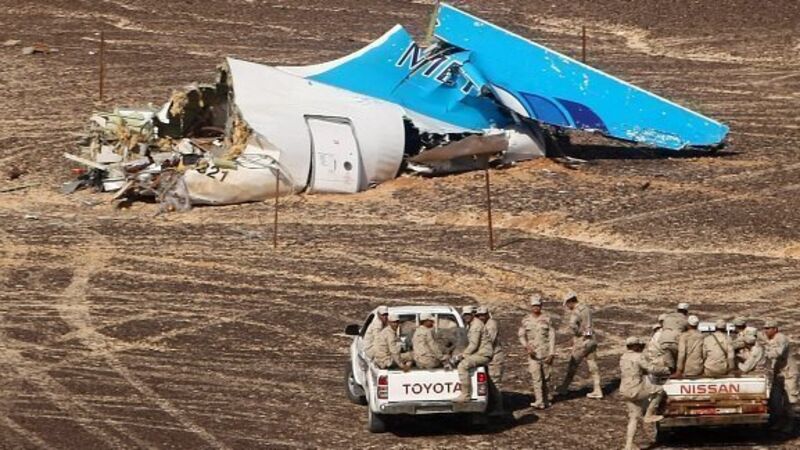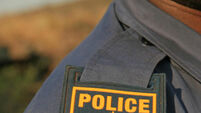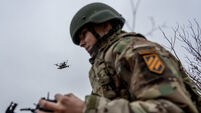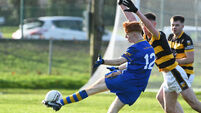‘No proof yet’ plane broke up in mid-air

The civil aviation ministry in Egypt has said that there were no facts to substantiate Russian claims that the Russian airliner that crashed in Egypt on Saturday broke up in mid-air.
However, spokesman Mohamed Rahmi confirmed that no distress call had been received before the crash, which left wreckage from the Metrojet Airbus 321, carrying Russian holidaymakers back to St Petersburg from the Sinai Red Sea resort of Sharm el-Sheikh, strewn over more than 3km of desert in the Sinai Peninsula.
“No communication from the pilot was recorded at the navigation centres requesting anything,” he said.
Rahmi said the investigating team, led by Egypt and aided by experts from Russia, Airbus, and Ireland, where the plane is registered, had returned to the crash site yesterday.
Once investigations at the site were completed, they would focus on analysing the contents of the black box flight recorders, Rahmi said.
Rahmi said there was no proof yet that the plane had broken up in flight.
“This could be a long process and we can’t talk about the results as we go along,” he said.
However, the fact that no distress call was received, and the wreckage was scattered widely, has suggested a sudden breakup to many experts.
Theories floated so far range from a missile attack or a bomb on board to a structural failure.
However, an unnamed source quoted by Interfax said “sounds uncharacteristic of routine flight were recorded preceding the moment that the aircraft disappeared from radar screens”.
A Sinai-based Egyptian militant group allied to Islamic State claimed on Saturday to have shot down the plane in response to Russia’s military intervention in Syria in support of president Bashar al-Assad against rebels including Islamic State.
However, the militants are not believed to have missiles capable of hitting a plane at 9,000m.
A source in the committee analysing the flight recorders said that the plane had not been struck from the outside. Kremlin spokesman Dmitry Peskov said it was inappropriate to link the crash to Russia’s military strategy in Syria.
Some have also pointed to a 2001 incident, when the Airbus 321’s tail section struck the tarmac on landing, as a possible cause of structural weakness.
Faulty ‘tail-strike’ repairs have caused at least two catastrophic crashes in the past. However, the plane had passed safety checks and its operator, Kogalymavia, owner of the Metrojet brand, has said damage from the 2001 mishap was fully repaired and could not have been a factor.
The head of the health unit at Sharm el-Sheikh airport, Medhat Qandil, said the remains of the last 28 people killed in the crash had been sent to Moscow yesterday aboard a military jet, along with luggage from the plane and personal belongings found at the crash site.














